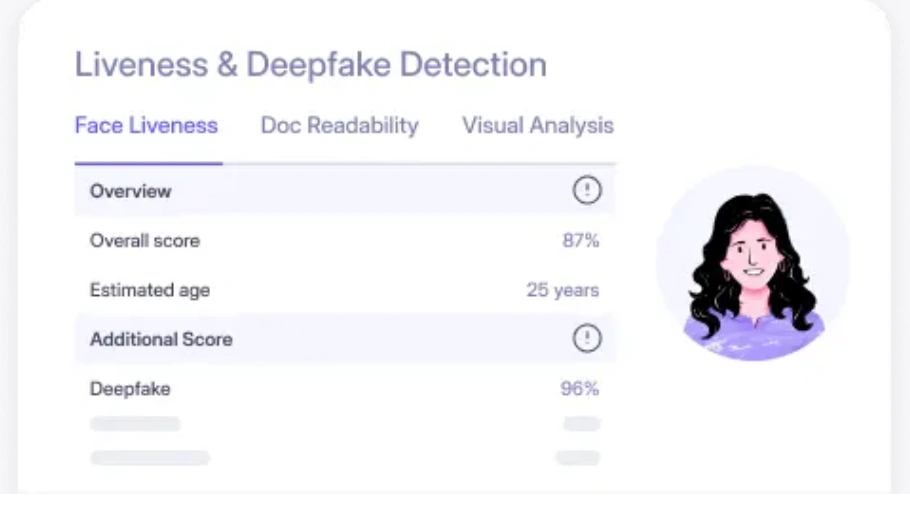Fraud detection is essential, whether for a bank or an online company. Once fraud can be detected and stopped, you and your clients are protected. Given the always-shifting nature of online fraud and techniques, traditional detection methods struggle to detect fraud effectively.
Such conventional rule-based systems and manual checks cannot match the new cyber thefts, which could lead to false positives and undetected illegal transactions. These limitations cost money and damage your reputation. With its advanced features, fraud detection machine learning (ML) offers a strong choice for improved prevention and detection of fraud.
How Machine Learning Works for Fraud Detection
With increasing cyber threats, advanced technologies like machine learning are used to identify different types of financial fraud.
Supervised Learning for Fraud Classification
A model is trained using a dataset comprising input variables and matching labels for correct outputs. For fraud detection, this means using a labeled dataset of past transactions—each tagged as either valid or fraudulent—for a model. The model learns correlations in the labeled data, differentiating actual failed transactions from fraudulent ones.
Logistic regression is a statistical model that can be applied to project the probability of a binary result. This makes it ideal for spotting fraud cases rather than those unrelated to fraud. Some more well-liked algorithms include Random Forests and Decision Trees. These methods construct a decision model resembling a tree to aid in categorizing transactions according to attributes like amount, frequency, and user behavior.
Unsupervised Learning for Anomaly Detection
A key difference here is that labeled historical data is not necessary for unsupervised learning. On the contrary, it finds outliers in normal behavior and trends in transaction data. This strategy can easily detect unlabeled or previously unknown forms of fraud. Anomaly detection methods like clustering and outlier identification are used to identify transactions that are drastically different from the usual normal behavior.
For example, clustering algorithms categorize transactions based on their similarities and mark any transaction in the example dataset that does not fit into any clusters. Using outlier identification methods, we can find transactions that are out of the ordinary compared to the entire dataset. This method helps detect unusual patterns and unanticipated forms of fraud.
Feature Engineering for Fraud-specific Input Data
To improve your model’s capabilities to detect fraud, you can use feature engineering to extract new features from raw historical data. This phase is crucial because it cleans up the transaction data so that machine learning models can use it more effectively. You can design features with labeled data that capture the average amount of transactions, the time of day they occur, the average order value, or the frequency of transactions.
Sound feature engineering can significantly improve your fraud detection model’s performance. Determining which traits are crucial for the model requires domain knowledge. When detecting credit card fraud transactions, factors like the transaction location, the kind of merchant, and the transaction amount related to the user’s regular expenditure could reveal important information.
CTA Banner: Improve fraud detection with advanced ML algorithms. Book a demo.
Machine Learning Algorithms For Fraud Detection
Modern fraud detection techniques use software programs and ML algorithms to identify and alert fraudulent activities and reduce the risk of false positives. Some of the noteworthy models are discussed below.
- Logistic Regression: It is one of the most basic statistical models for binary classification problems. It can tell you how likely it is that a given transaction is legal or fraudulent. Initial fraud detection efforts often use logistic regression due to its simplicity and interpretability. It may be simple, but it can serve as a rock-solid foundation for more complicated models.
- Decision Trees and Random Forests: Decision trees employ a model that resembles a tree to make judgments using input features. A feature-based decision is represented at each node in the tree, with potential outcomes indicated by the branches. Due to their ease of interpretation and visualization, decision trees are helpful for better comprehension of the model’s decision-making process.
- Support Vector Machines (SVMs): These machines seek the optimal hyperplane to separate legitimate from fraudulent transactions. SVMs thrive in high-dimensional spaces and scale appropriately for large datasets. When the classes—fraudulent and non-fraudulent transactions—are not linearly separable, the use of kernel functions helps them to translate the data into a higher-dimensional space where a linear separation is feasible.
- Neural Networks: Deep Learning models, in particular, can be trained to recognize intricate patterns in financial data using deep neural networks. Data processing and learning are accomplished by means of these models’ many layers of linked neurons. Although neural networks are great at detecting fraud, they are resource-intensive and need massive datasets for training.
Benefits of Machine Learning for Fraud Detection
The benefits of machine learning for fraud detection highlight how AI-driven algorithms enhance accuracy, efficiency, and adaptability in identifying and fraud prevention from activities across various industries.
Streaming Data Processing for Instant Fraud Detection
One great benefit of a machine learning system is its ability to real-time process streaming data. This ability lets you spot and stop fraud right away. Fast and continuous transaction industries like online banking and e-commerce have to have real-time fraud detection systems.

As transaction data flows through your systems, any suspicious activity can be found right away using machine learning techniques. This promptness not only prevents fraudulent transactions in their tracks but also lessens the possibility of damage and financial loss.
Adaptive Models for Evolving Fraud Patterns
As fraudsters’ methods change, your fraud detection software should likewise adapt. By iteratively training models and learning from fresh data, machine learning models can adjust to new patterns and strategies, including those used by a fraud ring. When updated and improved with new data, models become more resistant to new forms of fraud.
Adaptive models can be incrementally changed in response to new data by incorporating strategies such as online fraud detection machine learning. Doing so keeps the fraud detection system current and ready to tackle new fraud tactics. Machine learning models offer a strong and ever-changing defense against fraud attacks due to their ability to learn and adapt.
Explainable AI for Fraud Investigation
Explainable AI lets you investigate the decision-making process of your machine learning model. Fraud detection depends on knowing why a transaction was labeled as suspicious, so this openness helps to make it feasible. Two explainable artificial intelligence techniques that might help you to grasp the conclusions of the model are feature significance and decision trees.
Explainable artificial intelligence can identify which elements—such as the transaction’s value, the time of day, or the location—played the biggest influence on a suspicious transaction. Through fine-tuning, this transparency helps to further human intelligence in detecting and investigating fraud and improving the performance of the model.
Integrating Machine Learning into Fraud Detection Workflows
This examines how embedding AI-driven algorithms enhances the accuracy, efficiency, and real-time capabilities of fraud prevention systems.
API-based Machine Learning Platforms
To facilitate integration with pre-existing systems, several machine-learning platforms provide APIs. With these APIs, you may make use of sophisticated fraud detection features without starting from square one when it comes to model building and training. The API can be used to retrieve a fraud risk score or classification from transactions or data points.
From e-commerce systems to banking software to payment gateways, API-based solutions provide scalability and fit with a broad spectrum of systems.
No-code/Low-code Solutions for Fraud Detection
With no-code and low-code platforms—which do not call for significant programming knowledge—you can use machine learning for fraud detection. With their pre-built models and easy-to-use interfaces, these solutions allow you to fit your particular needs. A drag-and-drop capability is a typical tool of no-code systems that allows one to quickly create and implement machine learning models.
Low-code solutions give more freedom by allowing a specific level of coding while nevertheless providing complete control over pre-built components and templates. Regardless of their degree of technical expertise, more companies might benefit from improved fraud detection using either a low-code or no-code platform.
Combining Machine Learning with Rules-based Systems
Combining conventional rules-based techniques with various machine learning systems and models produces a hybrid fraud detection strategy. Rule-based solutions address known fraud trends using predefined rules, including transaction restrictions and geolocation checks. By contrast, machine learning techniques can identify evolving fraud techniques.
Combining the two techniques will help you to maximize your own benefits. Rules-based systems are excellent for rapidly and readily identifying obvious fraud; nevertheless, machine-learning models are your best friend when it comes to more complicated scams. Combining the two techniques will provide you with a considerably better approach to spotting fraud.
The Future of Machine Learning in Fraud Detection
The future of machine learning in fraud detection models explores how advanced algorithms, natural language processing, and AI technologies are transforming security measures, making fraud prevention more efficient and effective.
Advancements in Deep Learning for Fraud Detection
A branch of machine learning known as “Deep Learning” makes use of multi-layered neural networks. These models provide improved fraud detection capabilities by detecting complicated patterns and minor irregularities in transaction data. Improvements in deep learning’s architectures and training methods, among other things, have a multiplicative effect on the efficacy and precision of fraud detection models.

For instance, RNNs excel at analyzing sequential data, like transaction histories, while CNNs have been utilized to examine picture data to detect credit card fraud and identity theft. With the development of deep learning technology, more effective methods for detecting and avoiding fraud are becoming available.
Federated Learning for Collaborative Fraud Prevention
With federated learning, different companies can have data scientists work together on fraud detection models without revealing any private information. By combining expertise and data while protecting individual identities, this method improves fraud detection. The idea behind federated learning is that different organizations can use their own data to train models, and then share just the updated models with a central server.
The participating organizations receive their updates after the central server improves the global model. By pooling the knowledge, data availability and resources of several parties, this method improves the quality and applicability of fraud detection models.
Reinforcement Learning for Adaptive Payment Fraud Detection Strategies
Reinforcement learning teaches models to make decisions by rewarding them when they do the right thing. Because this approach is adaptable, your fraud detection solution will be able to refine its tactics as time goes on. The basis of reinforcement learning is a reward or penalty based on the model’s behaviors. The model interacts with its environment (e.g., transaction data).
Through this ongoing learning process, the model can create and improve fraud detection and prevention measures. Reinforcement learning shines when fraud strategies and customer behavior patterns are ever-evolving in a dynamic setting. Because they can adjust to new difficulties, reinforcement learning models offer strong protection against ever-changing payment fraud schemes.
Key takeaways
By using custom rules and utilizing state-of-the-art machine learning techniques, HyperVerge’s fraud detection technology can monitor and analyze transactions across multiple accounts in real-time. Our system is designed to work in tandem with your current data sources and systems, allowing you to easily customize the rules and alerts to meet your unique requirements.
Finally, machine learning provides cutting-edge capabilities to detect and avoid fraud in real time, radically altering the fraud detection landscape. By incorporating these machine learning capabilities into your fraud detection workflows, you may safeguard your firm from financial losses and keep up with ever-changing fraud methods. If you want to make sure your transactions are safe and sound, use HyperVerge’s fraud detection solutions.





















